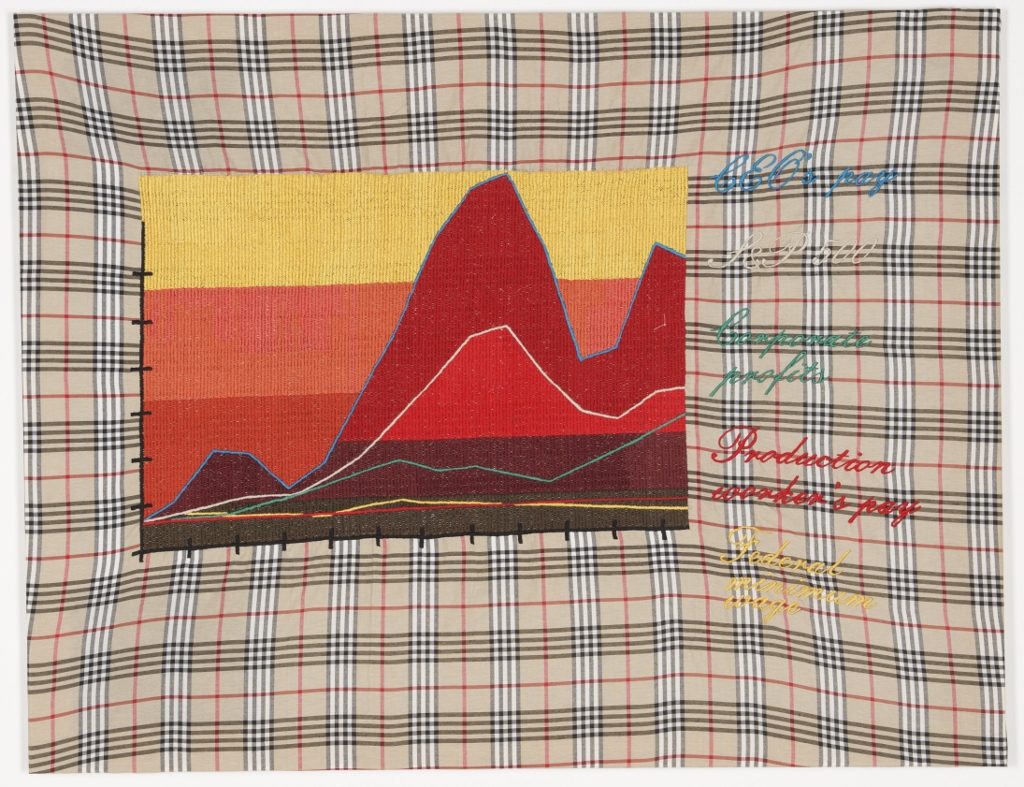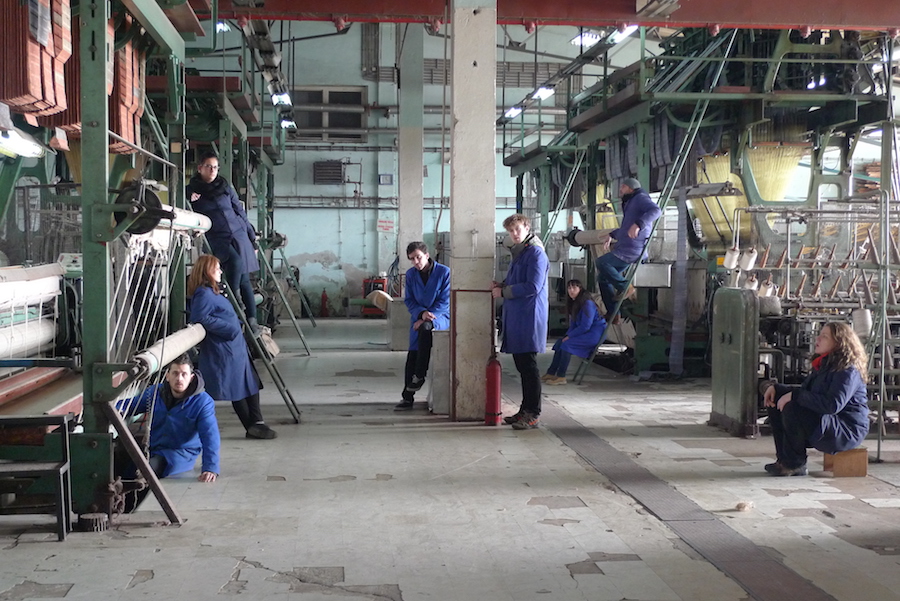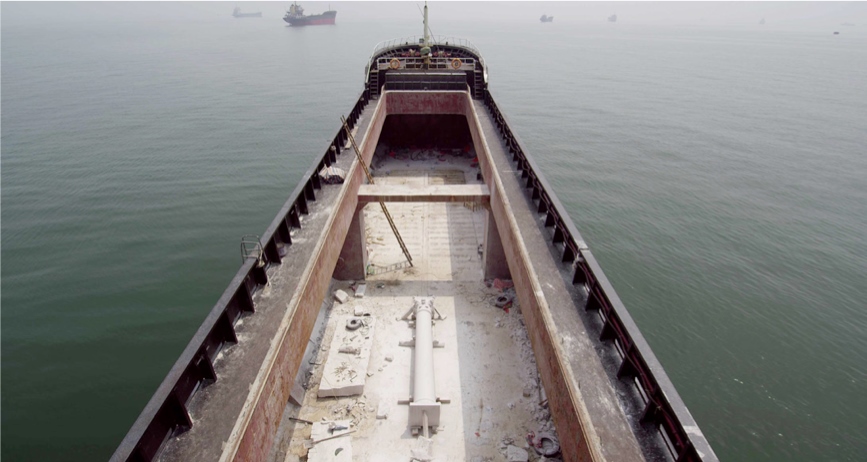This week’s contributing writer, Francesca Brusa, is a curator and author in contemporary art. She is currently PhD researcher in Art History, focusing on the understanding of production processes and hidden labour in contemporary art and society. She is based between Zürich and Milano.
Workers in the collective, physical effort of production: like ghosts, they stay invisible behind the product and to its consumers, while performing the material action/agency of production. Maja Bajevic’s Arts, Crafts, Facts (2015) and Adrian Paci’s The column (2013) are two works sharing the same dual nature, and a multi-media approach. On one side, production is portrayed in its most materialistic essence: workers, materials, and processes constitute the narrative elements of production and of its outcomes in filmic documentation. On the other side, material objects are produced, like carpets and columns, as metonymies of entangled social, political, and economic processes.
Arts, Crafts, Facts is an extensive installation that was presented for the first time at the 56th Venice Biennale. It comprises a series of embroidered carpets in traditional colorful Bosnian style, which represent economic graphs of the fluctuations in the stock market of the values of production and sales of gas, oil, coffee, wheat, and chocolate. The rugs are accompanied by a video showing the workers in the tapestry factory “Fates” near Sarajevo, where the carpets have been produced. The workers unanimously sing in a chorus words like “What is cotton farmer’s suicide?” or “You could be among 44 miners killed in Marikana Massacre” [1], symbolically voicing the global economic and political situation affecting the conditions of labor and of workers’ rights.


In Paci’s piece, the interior of a cargo boat is transformed into a marble workshop. The setting is surreal, as much as the activities taking place here. The video work traces the productive chain of a marble column on its long journey from China to Europe, from its extraction from a Chinese marble cave to its forging on the cargo-workshop at the hands of skilled Chinese carvers. The column is the story of a process, the “fairy tale”[2] narrating the absurdity of capitalist production, and the obsession for exploiting cheap labor force and maximizing profits. The work consists of both a realistic, yet poeticized, movie about the column, and of the marble column itself[3].

Art constituted a propaganda tool for the spreading of communist ideology under Communist regimes and realism was the privileged style.[4] After the collapse of Communist regimes (in the Soviet Union, Yugoslavia and elsewhere), artists experienced a moment of aesthetic freedom from the diktat of producing political art, but rather soon understood that the social role of art still proved to be the only possible answer to the widespread neo-liberal system of inequalities. Today, the work of artists Maja Bajevic and Adrian Paci lay exactly in the space between social, political practice and aesthetic production, bringing collective processes and material production together. Bajevic was born in Bosnia but works and lives in France, and Paci’s homeland is Albania though he is now based in Milan. Parting from object-making artistic tradition in favor of relations and collective situations as agencies of change, social practice infiltrates in the interstices between political performativity and aesthetic production.
Following artists such as Santiago Sierra, who commodifies abject human bodies in the gallery space (160 cm line tattooed on 4 people exhibited at el gallo arte contemporáneo in salamanca, spain, 2000), or Ai Wei Wei’s reliance (or can we talk of exploitation?) on a social body which performs the designated role of producer (Sunflower Seeds, 2008 or Fairytale, 2007), other artists of the league of Bajevic and Paci privilege video as medium. Artists like Italian Yuri Ancarani, Canadian Jennifer Baichwal, South Korean Im Heung-Soon, Chinese Zhao Liang, or NYC-based Mika Rottenberg deal with the absurd or tragic human and ecological landscapes under hyper-capitalism.
By portraying the collective body involved in production, be it either artistic or industrial, and by adopting realism as stylistic feature, the works of a generation of artists concerned with the social and human condition hidden behind production aim to criticize and awaken social awareness. They adopt a desecrated mechanism that manipulates empathic reactions through dissociated representations. The works by Bajevic and Paci not only display the productive assemblage, but also provocatively commodify it in artworks raising questions about human labor and its value in a distorted dystopian reality.
[1] Ana Janevski, Maja Bajevic. In: Raphael Gygax, ed. Maja Bajevic- Power Governance Labor. (Zürich: JRP Ringier, 2017) pp.172-176
[2] As suggested by the artist in an interview in occasion of his solo exhibition “Vite in Transito” at PAC, Milano in 2014.
[3] The movie was first exhibited in Paris in 2013 at the Jeu de Paume, while the column was exhibited horizontally in the Jardin des Tuileries.
[4] As established by the Union of Soviet Writers, which sanctioned its compulsory practice of censorship since 1932.
